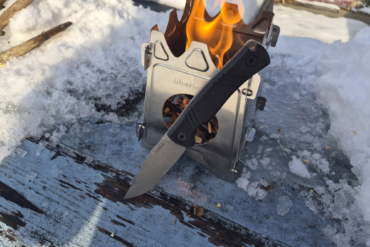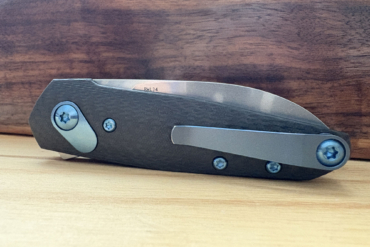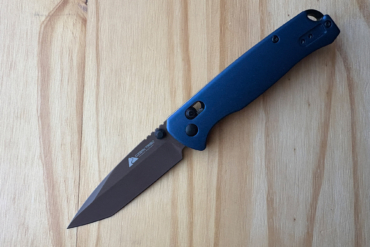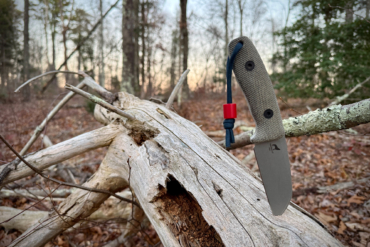Knife sharpening can be an art form. It can also be a simple task once a month or whenever your blade gets dull. For this article we interviewed Bill Raczkowski, a Gerber category manager and president of the American Knife & Tool Institute, and Steven Dick, editor of the publication Tactical Life, to compile the following 5 sharpening tips.
#1 Angle Matters — No matter what product you’re using the specific angle to sharpen is not as important as keeping a constant angle. A 20-degree angle to the surface of the blade is the angle to shoot for as you sharpen. Keep it consistent.
#2 Easy does it — Bill Raczkowski of the American Knife & Tool Institute shared the following insight on a common sharpening mistake: “One thing new people tend to do is over-pressure the knife when sharpening. My best analogy is a golf swing or throwing a bowling ball — more effort does not necessarily mean the ball goes further or straighter. It’s a very light grip and low pressure on the knife that’s best. Let the stone do the work; keep a constant angle and a constant pressure on the stone.”

#3 Rock Options — The oldest sharpening technique, which is still practiced widely today is stone sharpening. But don’t think any rock you pick up can get the job done. Raczkowski again offered his expertise: “I’ve tried many ‘stones’ and the best one is a personal choice. A rough stone with low grit density is for the first pass, especially with a dull knife. A medium stone is next, then fine and ultra fine. The worse the blade’s edge, the more time it takes to get the best edge. Another reason to keep the knife’s edge sharp constantly: Less time to bring it back to life! I personally use a super-fine flat ceramic stone daily.”
#4 Know your Stone — Most sharpening stones can be used wet or dry, however, some stones are quickly broken down by oil. It’s crucial to read the manufacturer’s guidelines on a stone. On the wrong type of stone, oil allows the collapsed cutting particles to clog the surface of the stone and can over-lubricate the surface, slowing the sharpening process.
#5 Blade Test — Test blade sharpness by cutting a sheet of paper. If it slices cleanly through paper without tearing or bending the page over you’ll know the blade is sharp. A final, and hopefully obvious, tip: Never test the sharpness on yourself. Save your arm hair or skin. Inanimate objects are happy to help determine if you’ve done the sharpening job right!
 ” form=”dose” />
” form=”dose” />
Bonus: Use A Tool! Want a factory-edge quickly and consistently? Products like those from Work Sharp Knife & Tool offer a fast way to get a factory job at home. By using a series of abrasive belts, these sharpeners can deliver a fine beveled edge. This kind of tool is often employed by commercial knife shops. They have blade guides to deliver consistent edge angles every time. The Ken Onion Edition Knife & Tool Sharpener ($149) has settings to make it variable from 15 to 30 degrees for a variety of edge finishes on your blade.
—This article is a part of GearJunkie’s “Day of the Knife” project.





